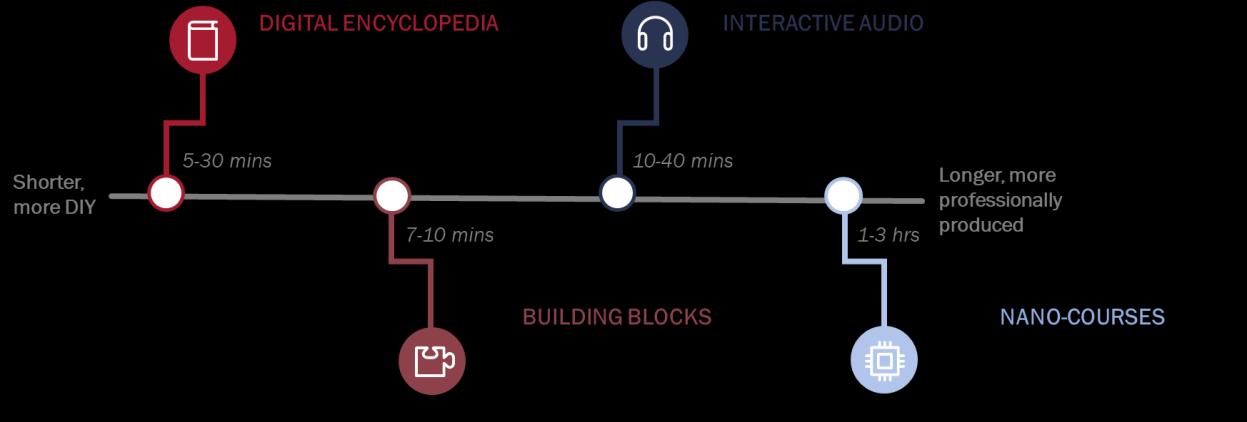
2 minute read
v. Technology and Platforms
• Surfacing innovations. Great ideas can come from anywhere, but they spread only if curated and shared by cross-school efforts, that have ranged from biweekly Into Practice newsletters and the Teaching Innovations Gallery (during the pandemic) to regular meetings of the
Teaching and Learning Centers, cross-school Colleague Conversations, Harvard-wide faculty surveys, and Harvard-wide reports on remote teaching and learning during the pandemic. • Coordinating cross-school agendas. Over the past three years the disparate leaders of
Harvard’s professional and lifelong learning (PLL) community, including executive, continuing, and online education, have benefited from collaboration, joint initiatives, and meetings co-chaired with HUIT and VPAL. During the pandemic the VPAL Academic
Planning Groupconvened leaders in all the schools to help coordinate efforts, identify common opportunities and challenges, surface interdependencies, and draft policies. • Common standards: digital credentialing. Although several schools had considered offering e-certificates, badges, and other digital credentials, they boosted their efforts in 2019-2020, led by the FAS Registrar’s Office and spanning registrars, VPAL, the Commencement Office, and the PLL community. By June 2021 the schools had issued more than 16,000 digital degrees and certificates bearing the same authority as printed ones. • University-wide policies. Schools benefit when central offices provide consistent advocacy and administration of policies, such as approval of new degrees, residency requirements, and outside activities.
• Harvard-wide partnerships. Outside organizations often want to work with one Harvard, not with multiple Harvards. Central coordination should facilitate bidirectional access and optimize terms, encouraging schools, programs, and faculty to form mutually rewarding relationships. • Learning platforms and tools. As the Harvard Library and the widespread use of Canvas and other technologies have shown, our learners benefit when they can move seamlessly across multiple Harvard academic units using common platforms. Future content delivery will require heightened functions and integration. (See “Technology and Platforms, ” below.) • Identity and data management. Owing to siloed databases and student information systems,
Harvard currently has no way to track and enhance a single learner’s experience across multiple schools. The task force strongly supports current efforts toward cross-university identity management to enhance post-pandemic teaching and learning opportunities. • Digital assets and a Harvard digital campus. The vision described above (“Expanding
Community”) would capitalize on Harvard’s eminence in a range of fields. To effectively integrate short-form content and global engagement, central, cross-school initiatives should establish frameworks for the university as a whole, laying the groundwork for participation by innovators and educators Harvard-wide. v. Technology and Platforms Several of these initiatives would benefit from a coordinated technology strategy that identifies cross-school teaching and learning priorities and advances cooperation and resource sharing. We’ve identified three priorities: • Upgrading classroom capabilities with simple tools to enhance synchronous teaching and learning.



